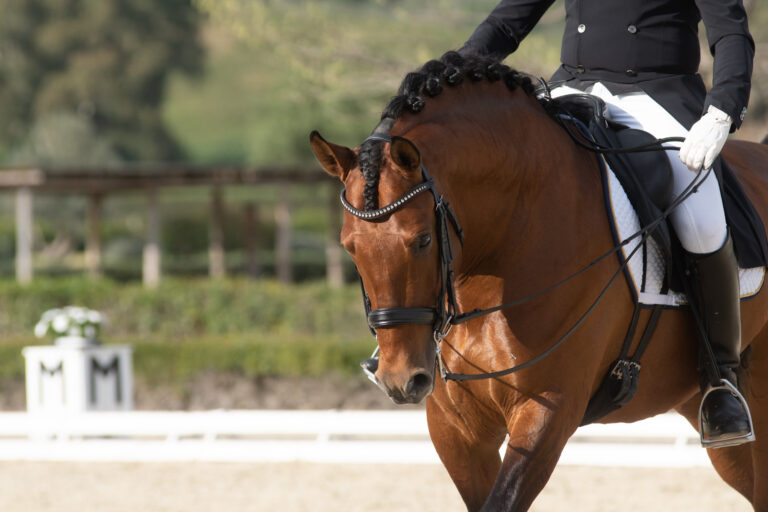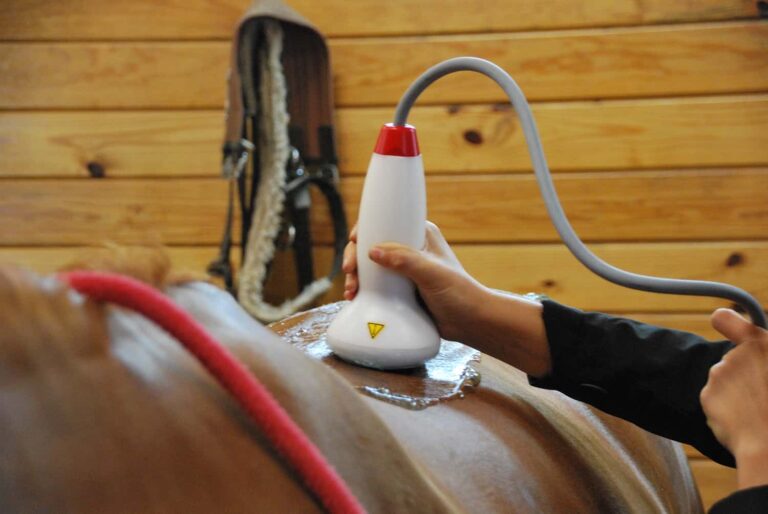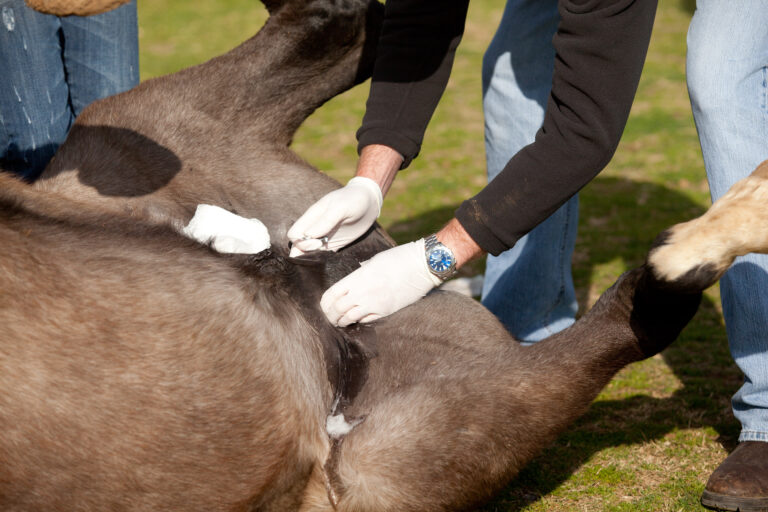
In this episode of Daily Vet Life, Alexander Daniel, BVetMed, DACVS (LA), of Daniel Equine Services in South Florida, talks about a foot condition that frustrates veterinarians, farriers, and horse owners alike: Navicular or, more accurately, podotrochlosis. He said he sees it in Quarter Horses more than other breeds and described one of those cases.
Dr. Daniel’s Second Opinion
Daniel first met this Quarter Horse patient as a second opinion case. The horse was recovering from a check ligament injury and during rehab became 3 out of 5 lame on the right front. While examining the horse, Daniel observed that he was slightly lame on the left front, as well, and tested positive with hoof testers over both heels. The horse had long toes and slightly low heels.
A palmar nerve block to the right front resolved that lameness and exacerbated the left front lameness. After blocking the left, the horse was essentially sound.
“OK, so you’ve got caudal heel pain. You’ve got a Quarter Horse with a palmar digital block that now switches lameness. You’re starting to think navicular syndrome,” Daniel said.
He said the next step after he localizes a lameness to the navicular apparatus is almost always radiographs—standard, skyline, and dorsoproximal palmar distal oblique views to view the navicular bone from orthogonal angles. These revealed enlarged vascular channels in this horse.
“So we’ve essentially established that this horse had a ligament injury, but it’s now clearly also got navicular issues,” said Daniel.
With more challenging cases, he said he might also follow up with MRI, but it’s not always necessary or practical.
Treatment Options
The first thing Daniel said he does when discussing treatment options for navicular horses is to make sure the hoof is well-balanced through trimming, shoeing, and/or adding a wedge to reduce the strain on the tendons. Then, he typically recommends administering bisphosphonates to inhibit the osteoclasts that break down bone tissue and to help restore the bone’s normal homeostasis. This horse received Osphos injections.
Over time, said Daniel, they began to see improvements in the horse’s lameness. He said the owner is diligent about providing feedback every five months so they know when the horse is starting to become uncomfortable again and needs another Osphos injection. They also maintain the horse’s soundness with navicular bursa injections every nine months. At 16, the horse is still sound and in work after several years of this treatment routine.
Take-Home Message
Daniel calls this horse the poster child for navicular cases in his clinic, with his go-to therapies being bisphosphonates and navicular bursa injections, depending on the underlying pathology. He said he’s noticed a shift in the industry’s mindset toward podotrochlosis just in the past decade, thanks to the availability of MRI and therapeutics like bisphosphonates, as well as more science behind shoeing strategies.
Listen to this episode of Daily Vet Life to learn about the complete case and what guides Daniel’s decision-making process.
About Dr. Alexander Daniel
Alexander Daniel, BVetMed, DACVS (LA), is a board-certified equine surgeon with extensive expertise in sports medicine and advanced surgical procedures. A 2007 graduate of the Royal Veterinary College, London, in 2007, Daniel began his surgical residency in 2011 at Colorado State University, completing a dual surgical program and earning a master’s degree. From 2015 to 2019, he served as a staff surgeon at a leading equine hospital in Wellington, Florida, where he gained extensive experience managing complex cases.
In 2019, Daniel founded Daniel Equine, focusing on providing specialized care for sport horses in South Florida. Known for his meticulous approach and commitment to advancing equine health, Daniel has authored multiple studies over the years. His dedication to excellence ensures that each case is approached with precision and care, making him a trusted professional in the field of equine sports medicine.
Related Reading
- Where We Stand With Podotrochlosis
- Tips and Tricks to Acquiring Great Equine Foot Radiographs
- Daily Vet Life: Successful IRAP Outcomes
Stay in the know! Sign up for EquiManagement’s FREE weekly newsletters to get the latest equine research, disease alerts, and vet practice updates delivered straight to your inbox.




